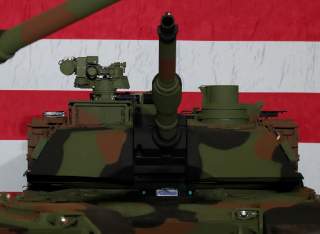China's Military Is the Biggest on the Planet (But Can It Fight America and Win?)
We game it all out.
In contrast, China holds a no-first-use doctrine because it maintains only nuclear ballistic missiles and a few ballistic missile submarines—though it may one day re-introduce a nuclear bomber component. China's smaller arsenal is also inadequate to deliver a knock-out first strike but is instead a deterrence-oriented ‘counter-value' force threatening nuclear annihilation of an adversary's largest cities were China to come under attack. Beijing has become nervous, in recent years, by the expansion of U.S. ballistic missile defense capabilities, which may eventually prompt a move to enlarge the arsenal.
Staring Contest over the Pacific
It is at sea that the United States and China are most openly in competition. Today, U.S. warships regularly operate off of Chinese littoral water, but not vice versa. As maritime invasions dealt China crippling and humiliating blows in the nineteenth and early twentieth centuries, Beijing places great importance on pushing the U.S. Navy away from its belt of bases it calls the ‘first island chain', and preferably even further to the second or third (which includes Hawaii).
International waters are generally defined as being twelve nautical miles from a country' shoreline. But, Beijing claims vast swathes of the South China Sea as its exclusive preserve, even if those waters are hundreds of miles distant from mainland China and directly adjected to other Asian countries. In recent years, Beijing has taken to creating artificial islands and deploying military bases on them to reinforce its claims, as well as harassing ships and aircraft passing through the South China Sea. It utilizes a vast naval militia of sorts, including hundreds of nominally civilian boats and vessels, to advance Chinese foreign policy and control.
For its part, the U.S. Navy has continued to dispatch destroyers and cruisers on ‘Freedom of Navigation’ patrols to maintain a presence in these international waters. More importantly, it has a network of bases in Japan, South Korea, the Philippines and Singapore, as well as on islands such as Guam and Hawaii, which would be hard to dislodge it from—unless alliances with those countries are allowed to fray.
However, China has built up a sufficient arsenal of ground-based ballistic missiles, warplanes, and naval assets that arguably it has won military superiority in its littoral waters—something which was not the case a few decades ago. Also, the conventional missile force could pose a significant threat both to crucial U.S. airbases and even carriers at hundreds of miles away at sea.
On the other hand, China is only beginning to catch up with United States's unique fleet of eleven nuclear-powered supercarriers, each of which carries dozens of Super Hornet and Growler fighters and, eventually, F-35B stealth jets. Each carrier is furthermore protected by a task force of escorting warships boasting networked radars, submarine-detecting sonars, and missile defenses.
Currently, China has two lower-capability ski-jump style carriers in service carrying smaller wings of J-15 fighters. But China plans on building two larger carriers with superior catapult-assisted takeoff, and eventually two nuclear supercarriers with newer electromagnetic catapults. It also is building up a fleet of both small and large surface combatants armed with very long-range anti-ship missiles—though the doctrine and sensors to pull off such long-range attacks may still be in development.
The U.S. and Chinese Navies also have very different submarine fleets. The U.S. Navy has to operate across vast distances and has built up a force of forty to fifty attack submarines, and eighteen Ohio-class ballistic and cruise-missile subs, that can remain underwater nigh indefinitely due to nuclear propulsion. China has in service only slightly over a dozen nuclear-powered submarines, but seventy much cheaper diesel, or quieter AIP-powered submarines, which are suitable for short-range operations off of China’s coast. Though noisier than U.S or Russian submarines, the numerous Chinese diesel and AIP submarines could still be quite effective in an anti-ship role.
China and the United States will likely remain fixated on each other as potential military competitors for decades to come—but if relations are prudently managed, they won’t have to become actual adversaries in a war. The two countries’ respective capabilities, however, will play a role in how their global influence is perceived.
Sébastien Roblin holds a Master’s Degree in Conflict Resolution from Georgetown University and served as a university instructor for the Peace Corps in China. He has also worked in education, editing, and refugee resettlement in France and the United States. He currently writes on security and military history for War Is Boring.

